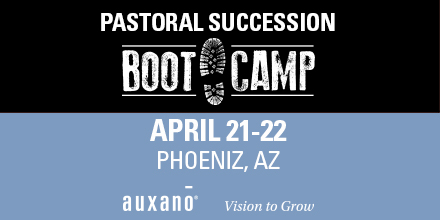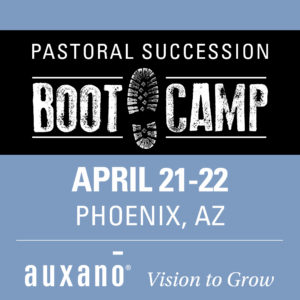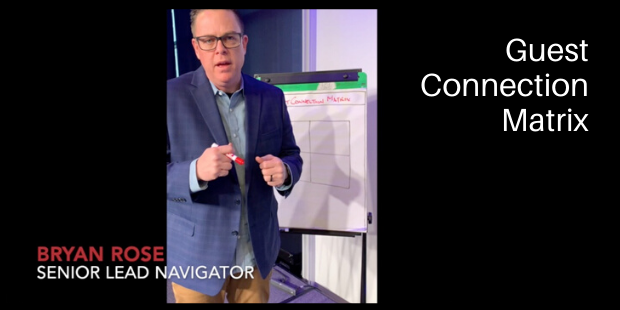
How to Utilize Four Different Modes of Design Thinking
According to the authors of Solving Problems with Design Thinking, most leaders harbor a deep, dark secret: They believe in their hearts that they are not creative, and find themselves short on delivering innovation ideas to their organizations.
In today’s seemingly rampant innovation mania, managers and leaders cannot appear unimaginative, let alone fail to come up with brilliant solutions to vexing problems on a whim.
For most of us there will be no Moses-like parting of the waters of the status quo
that we might safely cross the Red Sea of innovation.
Drowning is more likely our fate.
– from Solving Design Problems
There is hope.
Instead of trying to part the waters, leaders need to build a bridge to take us from the current reality to a new future.
In other words, we must manufacture our own miracles.
The technology for better bridge building already exists, right under our noses. It’s called design thinking.
This approach to problem solving is distinguished by the following attributes:
- It emphasizes the importance of discovery in advance of solution generation using market research approaches that are empathetic and user driven
- It expands the boundaries of both our problem definition and our solutions
- It is enthusiastic about engaging partners in co-creation
- It is committed to conducting real-world experiments rather than just running analyses using historical data
And it works.
Design thinking is capable of reliably producing new and better ways of creatively solving a host of organizational problems.
THE QUICK SUMMARY – The Non-Designer’s Guide to Design Thinking by Kunitake Saso
“Design thinking seems to be an important way of thinking in 21st century business, but I am not sure where to begin.” Do you agree or not? If yes, this book is a good introduction to map the overall picture of learning design thinking.
This book illustrates the key components of mastering design thinking based on the author’s experience at the Institute of Design, Illinois Institute of Technology, one of the most famous Design schools in the world. The author highlights the difference between the business world and design world based on his own experience. His big transition from logical world as a ex- P&G marketers to design world helps non- designers learn design thinking with comparison to business protocol.
The author categorized the key components of design thinking into four parts:
- Thinking: Hybrid Thinking
- Mindset: Creator Spirit
- Process: Human Centered Co-creation
- Environment: Switching to Creative Mode through Tools and Space
In later chapters, the author proposes the framework of how to start the career of business design world and finally how the design thinking might influence your well being. This book is a compass for you to start mastering design thinking for all non-designers.
A SIMPLE SOLUTION
Design teaches us how to make things feel real, and most church rhetoric today remains largely irrelevant to the people who are supposed to make things happen.
Church elders and staff can make plans, bring on new staff, invest in the latest conference success story – but they can’t change the organization without a lot of help. The only people who will care enough to help are those for whom strategy is real.
Things that feel real to people are both interesting and personally significant. They are experienced, not just pronounced. While leaders are showing growth spreadsheets, design thinkers are telling stories.
We have a lot to learn from design thinking about how to tell a story that engages an audience, captures the experience dimension and makes the future feel real.
Using the power of design thinking to solve problems is a skill focusing on switching between four modes that make full use of the entire body.
Traveler (Research)
First, you visit somewhere new and unusual. Feel the place with all your senses; keep your curiosity intact while you immerse yourself completely into this world unknown to you. Take notes and snap photos at every opportunity. Record that sense of excitement when experiencing something unusual, so as not to lose it. Imagine a traveler who makes few plans in advance, who prefers strolling around places unknown to him, striking up conversations with strangers and writing about it in his blog.
Journalist (Analysis)
When you come back from the journey you review your memos and photographs like a journalist would after an interview; analyze objective facts and your own subjective interpretation using your left brain, and process it with your gut.
Editor/Artist (Synthesis)
Use all the facts and novel perspectives you acquired from the trip as inspiration to express the user’s problems and values with a poignant slogan, and with a single page compilation of the most memorable photographs, as if you are a magazine editor. Imagine The New Yorker or similar magazine to better understand the process.
Craftsman (Prototyping)
Finally, you use your hands like a craftsman to physically realize an idea for a product or service that you thinks should be present in the worldview you have just imagined. Picture an engineer who likes to make things himself, or a do-it-yourself father, or a creative housewife.
Kunitake Saso, The Non-Designer’s Guide to Design Thinking
A NEXT STEP
Everyone designs who devises courses of action aimed at changing existing conditions into preferred ones. – Herbert Simon, Nobel Laureate
If we take Simon’s description but simplify the language and tone, we end up with a new definition powerful enough to recast the way organizations think:
Design is change.
According to Simon, anyone who tries to improve a situation is a designer. You don’t need a Master of Fine Arts degree and nine years of experience at a design studio to engage in designing.
You just need to find a situation worth improving and then work through the creative process.
And of course, church leaders don’t have any of those situations, do they?
Marty Neumeier, writing in The Designful Company, reminds us that leaders are designers, too, since leading is the act of moving people from an existing situation to an improved one.
According to Neumeier, while everyone uses design thinking in some situations, certain people are particularly suited to it. They tend to be:
- Empathetic – able to understand the motivations of individuals and form strong emotional bonds
- Intuitive – a shortcut for understanding situations. While the logical mind works through sequential steps, the intuitive mind is good for seeing the whole picture
- Imaginative – new ideas come from divergent thinking, not convergent thinking
- Idealistic – creative personalities are notorious for focusing on what’s wrong, what’s missing, or what they believe needs to change.
Designful leaders are energized by the ambiguity and uncertainty that comes with constant change. Designful leaders don’t accept the hand-me-down notion that cost cutting and innovation are mutually exclusive, or that short-term and long-term goals are irreconcilable. They reject the tyranny of “or” in favor of the genius of “and.”
Schedule some reflective time by yourself, and read both the four roles in the box quote above as well as the four characteristics above.
At the end of this reflection, when you look in your leadership mirror, do you see a designful leader?
This is part of a weekly series posting excerpts from one of the most innovative content sources in the church world: SUMS Remix book excerpts for church leaders.
SUMS Remix takes a practical problem in the church and looks at it with three solutions; each solution is taken from a different book. Additionally, a practical action step is included with each solution.
As a church leader you get to scan relevant books based on practical tools and solutions to real ministry problems, not just by the cover of the book. Each post will have the edition number which shows the year and what number it is in the overall sequence. (SUMS Remix provides 26 issues per year, delivered every other week to your inbox).
>> Subscribe to SUMS Remix <<

Tags: Design Thinking, Design is change, Kunitake Saso, SUMS Remix, The Non-Designer's Guide to Design Thinking































